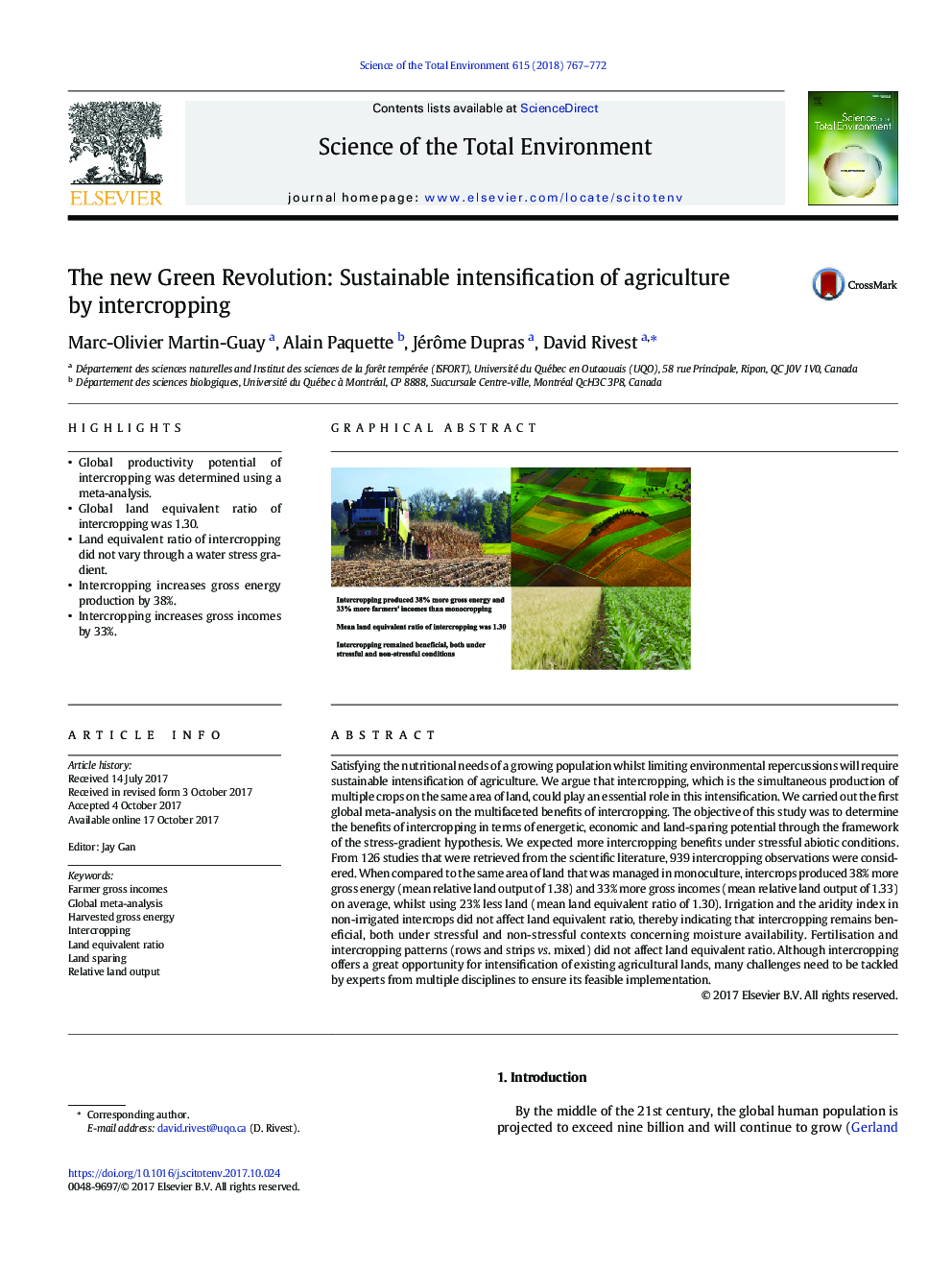| کد مقاله | کد نشریه | سال انتشار | مقاله انگلیسی | نسخه تمام متن |
|---|---|---|---|---|
| 5749833 | 1619689 | 2018 | 6 صفحه PDF | دانلود رایگان |
- Global productivity potential of intercropping was determined using a meta-analysis.
- Global land equivalent ratio of intercropping was 1.30.
- Land equivalent ratio of intercropping did not vary through a water stress gradient.
- Intercropping increases gross energy production by 38%.
- Intercropping increases gross incomes by 33%.
Satisfying the nutritional needs of a growing population whilst limiting environmental repercussions will require sustainable intensification of agriculture. We argue that intercropping, which is the simultaneous production of multiple crops on the same area of land, could play an essential role in this intensification. We carried out the first global meta-analysis on the multifaceted benefits of intercropping. The objective of this study was to determine the benefits of intercropping in terms of energetic, economic and land-sparing potential through the framework of the stress-gradient hypothesis. We expected more intercropping benefits under stressful abiotic conditions. From 126 studies that were retrieved from the scientific literature, 939 intercropping observations were considered. When compared to the same area of land that was managed in monoculture, intercrops produced 38% more gross energy (mean relative land output of 1.38) and 33% more gross incomes (mean relative land output of 1.33) on average, whilst using 23% less land (mean land equivalent ratio of 1.30). Irrigation and the aridity index in non-irrigated intercrops did not affect land equivalent ratio, thereby indicating that intercropping remains beneficial, both under stressful and non-stressful contexts concerning moisture availability. Fertilisation and intercropping patterns (rows and strips vs. mixed) did not affect land equivalent ratio. Although intercropping offers a great opportunity for intensification of existing agricultural lands, many challenges need to be tackled by experts from multiple disciplines to ensure its feasible implementation.
425
Journal: Science of The Total Environment - Volume 615, 15 February 2018, Pages 767-772
